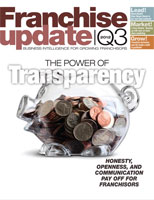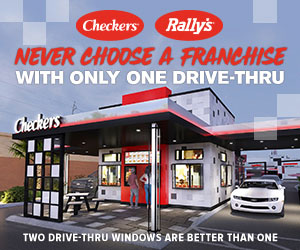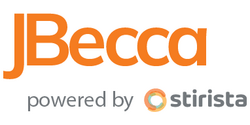What's Your Multi-Unit Strategy? Creating an Effective Expansion Plan
Most franchise systems would like to attract quality multi-unit franchisees and enjoy the benefits of having fewer franchisees operating more units, and reap the efficiencies gained in support, marketing, and training. Here are some tips for deciding if a multi-unit program is right for your concept.
Most franchise systems organically grow a single-unit owner into their first multi-unit owner--without having proper systems or training in place for multi-unit operators. They are (or become) reactive, rather than starting out of the gate with a multi-unit strategy. This is an organic growth curve that occurs in most franchise systems, as long as its unit economics are strong and the concept can operate through qualified managers. Reactive growth needs to be managed early in the lifecycle of your franchise system.
Single-unit franchise systems with hands-on operators who do very well with one location, however, will have a struggle with expansion. In a majority of these cases, the franchisee and franchisor will see reduced sales in the original unit because they are not prepared to operate through managers. And, with expansion capital at a premium in most cases, reducing the operating capital of Unit 1 to open Unit 2 will be a challenge for both franchisee and franchisor. Here are five critical questions to ask yourself:
- Is my franchise concept the right model for multi-unit ownership?
- Do I have systems in place to support multi-unit owners?
- Have I operated multiple company-owned units as a franchisor?
- Is my FDD prepared correctly to offer multi-unit and area development?
- Am I willing to commit the resources for this type of expansion?
As stated earlier, early multi-unit owners at most franchise concepts were single-unit owners who succeeded with their original unit and expanded. When this growth starts occurring in your system, it is a good indicator that your brand has the potential for multi-unit expansion. At this stage, it is important that you can confirm that you have the resources to commit and a plan to start the process.
Once you've committed to grow the system through multi-unit expansion, you have a "game plan" that is proactive. Once you've re-engineered your operating, support, and training programs, you can start creating profiles and qualification systems to attract the right multi-unit owners for your brand. In several cases, the POS system will not integrate with multiple stores and does not have the capacity to handle the reporting needed for efficient operations. Once you've confirmed you have the resources and systems in place, the next step is to disclose those new systems in your FDD--not write an FDD and make the system fit it.
1) Preparing and launching a multi-unit program. Your FDD is the starting point and roadmap that will guide your program. Since qualified, experienced multi-unit operators want to be able to discover key facts quickly, and either engage or move on to another concept, your FDD becomes one of your primary sales tools and information centers for them. Most multi-unit candidates will research concepts much differently than single-unit candidates, and most likely will not follow the sales processes you've used in the past.
Generally, after initial conversations, they will request a current FDD. But because the sales process is completely different for experienced franchise buyers, the FDD must be buttoned up tightly so they can gather information quickly and discover the multi-unit benefits you've added--and see that you understand and are committed to multi-unit owners and expansion.
2) Franchise development marketing. It's likely your company website, brochures, and communications with candidates are created to attract single-unit owners. Making changes to attract multi-unit operators is a critical step that some franchise companies do not want to take because of the cost, or because they are concerned about losing the candidates they are currently attracting. To work with multi-unit owners, it is imperative to create the proper materials and systems or all your investment in changes will not be portrayed correctly. You have to talk the talk and walk the walk! Connecting the dots from the FDD to the execution of documents is critical.
3) Profile the best multi-unit owners you can. Understanding the profile of your successful multi-unit candidate is a key to success. Selling to unqualified multi-unit owners who fail or don't open the required stores will only squelch your development efforts down the road because of the resulting challenges and validation calls with the wrong owners. Don't compromise in this area. This is the foundation of the plan that will move your system forward.
4) Finding the right candidates. Multi-unit marketing is a science, not a mass marketing effort. Once you've identified the profile of the right candidate for your system and the markets to develop, you are ready to assemble a marketing plan. Working with consultants and a franchise marketing or advertising agency with success in multiple-unit sales and area development is the key. Funneling your leads into professionally conducted webinars online, with professional landing pages specific to the targeted lists, has been an effective method of screening and qualifying. Advertising avenues are widespread, and vary depending on the concept and the target markets. Here is a partial list of activities and marketing ideas: targeted email lists; multi-unit owner conferences; direct mail lists; other multi-unit franchisees; email and direct mail lists; and print (local/regional newspapers and magazines, and trade magazines).
- Slow and steady. This is not a quick process. It will take most companies about six months to pull together all the different components needed to be successful in a multi-unit expansion plan. Once this has all been completed, you can expect to attract around 5 to 8 qualified multi-unit owners who will purchase from 3 to 5 units each. If you can get those owners' first units open and start construction on the second in the next 12 months you will be well on your way to building a strong foundation for future expansion.
Happy Selling,
Marc
Share this Feature
Recommended Reading:
FRANCHISE TOPICS
- Multi-Unit Franchising
- Get Started in Franchising
- Franchise Growth
- Franchise Operations
- Open New Units
- Franchise Leadership
- Franchise Marketing
- Technology
- Franchise Law
- Franchise Awards
- Franchise Rankings
- Franchise Trends
- Franchise Development
- Featured Franchise Stories
FEATURED IN

Franchise Update Magazine: Issue 3, 2012








 The franchise listed above are not related to or endorsed by Franchise Update or Franchise Update Media Group. We are not engaged in, supporting, or endorsing any specific franchise, business opportunity, company or individual. No statement in this site is to be construed as a recommendation. We encourage prospective franchise buyers to perform extensive due diligence when considering a franchise opportunity.
The franchise listed above are not related to or endorsed by Franchise Update or Franchise Update Media Group. We are not engaged in, supporting, or endorsing any specific franchise, business opportunity, company or individual. No statement in this site is to be construed as a recommendation. We encourage prospective franchise buyers to perform extensive due diligence when considering a franchise opportunity.